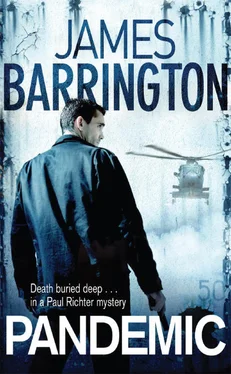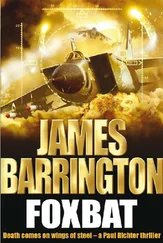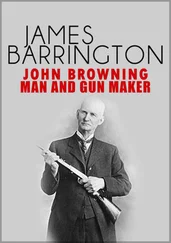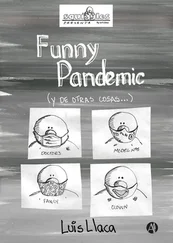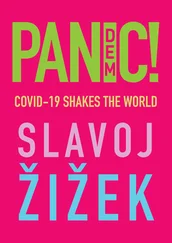Aristides looked carefully at the stopper – now revealed – and raised his eyebrows. It had been locked in place, with a small keyhole right in its centre, and the Greek could tell immediately that this was intended for some kind of security key. His trick with a screwdriver wouldn’t work again.
He sat thoughtfully at the rough oak table, hefting the small steel flask in his hand, considering his options. The precautions that had been taken with these containers were like nothing he had ever seen before, and in his long career as a diver he’d been involved in the recovery and opening of numerous safes and strongboxes found on wrecked ships. Some had been little more than padlocked containers, yielding to a simple wrench from a pry-bar or a blow from a hammer, while others had required oxy-acetylene cutters or even a thermic lance to cut around the lock or slice an access hole in the back or side of a safe. But none that he could recall had ever involved such serious multi-layered protection for such a small object.
Aristides could think of only two possible reasons why such elaborate precautions had been taken: the contents had to be either extremely valuable or very dangerous. The question was, which?
Central Intelligence Agency Headquarters, Langley, Virginia
The top-floor office was spacious, light and airy, and had a clear and unobstructed view of the Virginia woodlands surrounding the Headquarters complex, but the big man wearing the charcoal-grey suit and sitting in a leather swivel chair had no eyes for the natural beauty of the locality. His attention was fixed on six eight-by-ten black-and-white photographs spread out on the desk in front of him.
The desk itself was big and impressive, an oak-framed antique with a walnut veneer. It was his personal property, having been in his family for at least eighty years. Apart from the photographs and three steel-mesh document trays, the only other objects on the desk were two telephones and a solid silver writing set. A tidy and organized desk, he had always believed, denoted a tidy and organized mind.
Beside the desk stood a purpose-built console, which housed a computer terminal with direct access to the CIA’s extensive databases, to the Internet, and to a host of other data sources including all the major news feeds.
He had arranged five of the photographs in a curving horizontal line across his desk, and in chronological order. The sixth picture he had placed off to one side. That one had been taken on the transit by the KH-12 bird three days earlier, and just showed an open boat, but no sign of an occupant.
It was that picture that had originally both alerted and alarmed the Director, particularly when he had checked the precise geographical location specified by the satellite, and printed at the head of each photograph. The next few passes had revealed nothing in that area, and he had for a brief period hoped and almost believed that the first picture had been an isolated occurrence of no long-term significance.
Then another pass had generated the remaining five pictures, taken at thirty-second intervals as the Keyhole satellite had over-flown the target area. These were superficially very similar. Close to the centre of each frame was the unmistakable shape of the same open boat – N-PIC had measured its length at just over eighteen feet – with a small wheelhouse at its stern.
The CIA officer wasn’t Photographic Interpretation trained, so each picture had been annotated by the N-PIC analysts at his request. Most of the labels were self-evident – wheelhouse, ropes, cleats, radar reflector, tyres acting as fenders, and so on – but he was going to have to accept their word that the vague oblong shapes visible along both sides of the boat towards the stern were aqualung racks, one with a set still in place.
In the first two pictures, the single occupant of the boat was leaning over the side, reaching down for something, or hauling something in. Until he’d studied the third picture, the CIA officer had wondered briefly if perhaps this was all a false alarm, and that what he was looking at was nothing more than a fisherman hauling up a lobster pot. Then he’d checked a Mediterranean chart and realized that the water there was far too deep for any lobster fisherman to foolishly try to catch anything.
And, anyway, in the third photograph the shape of an aqualung tank was clearly visible beside the man in the boat, even without the N-PIC label, so the analysts had been right about the type of boat, although they hadn’t been able to identify it by a name or a number.
The fourth picture showed three aqualung tanks resting beside the anonymous figure in the diving boat, but it was one N-PIC label in the fifth and final photograph that had caused the CIA officer most concern.
The major difference between this picture and the preceding four was that the figure was no longer bending over the side of the boat. Instead, the KH-12 camera had caught him just entering – or perhaps standing beside – the wheelhouse. For at least the sixth time, the CIA officer leaned forward over the last photograph and stared intently at one tiny section of it through his desk magnifying glass.
Clearly visible on the side of the boat, where the man had been bending over earlier, was a very slight protuberance. Next to that was an inked line joining it to the N-PIC label, that simply stated ‘ROPE IN WATER AND CLEATED TO GUNWALE’.
And that meant, or it could mean, that there was something at the submerged end of the rope.
Aeroporto di Brindisi, Papola-Casale, Puglia, Italy
‘Where did you spot him?’ Richter asked. It was late evening and he and Simpson were sitting in a military briefing-room at the Brindisi-Casale air base. Brindisi is a small airport, just outside the town of that name, handling a couple of dozen civilian flights a day to and from Rome, Milan and Venice. It is home to 9 Brigata Aerea of 15 Stormo, which flies Sikorsky HH-3F Search and Rescue helicopters, and also to the United Nations Logistic Base, which supports humanitarian aid and peacekeeping operations.
Rather than go to Rome or to any other location where the Italian Secret Service maintained a presence, they had decided it was both safer and easier to brief Richter within the confines of the airfield. He was, after all, the only member of any Western Intelligence service who could positively identify Lomas/Lomosolov. Even Simpson had wanted reassurance on that point.
‘You can do it, Richter?’ he had asked.
Richter thought back to that hotel in West London, and to the image of Lomas’s smiling face staring at him from the doorway of the room. It was an image that he knew, without a shadow of a doubt, would be with him for the rest of his days, no matter what happened now in Italy.
‘No problem,’ he had confirmed. ‘I’ll know him.’
‘Lomas – or the man we believe is Lomas – was spotted eight days ago by a covert operative, one of our watchers, at Rome’s Fiumicino airport,’ explained Giancarlo Perini, a senior operational agent of the SISDE who had flown into Brindisi-Casale an hour earlier by helicopter, specifically to brief Richter.
‘He arrived at the international terminal, Terminal Three. Because he was spotted before he reached passport control, the immigration people were able to record his details. He was travelling on a German passport, in the name of Günther, and had just arrived on a flight from Geneva. The purpose of his visit, he claimed, was tourism. We checked with Swiss – the airline he was flying with – and learned he has a return ticket to Geneva, due to fly out of Rome in three days. That was when we contacted your Secret Intelligence Service, Mr Simpson.’
Richter glanced over at Simpson and did some swift mental calculations. The timing for this was almost exactly right. As soon as Simpson had been informed by SIS about the possible sighting of Andrew Lomas – who was on the alert list of every Western Intelligence service – he had suddenly, miraculously, changed his mind about Richter’s long-standing request for two weeks’ continuation training on board the Invincible .
Читать дальше
